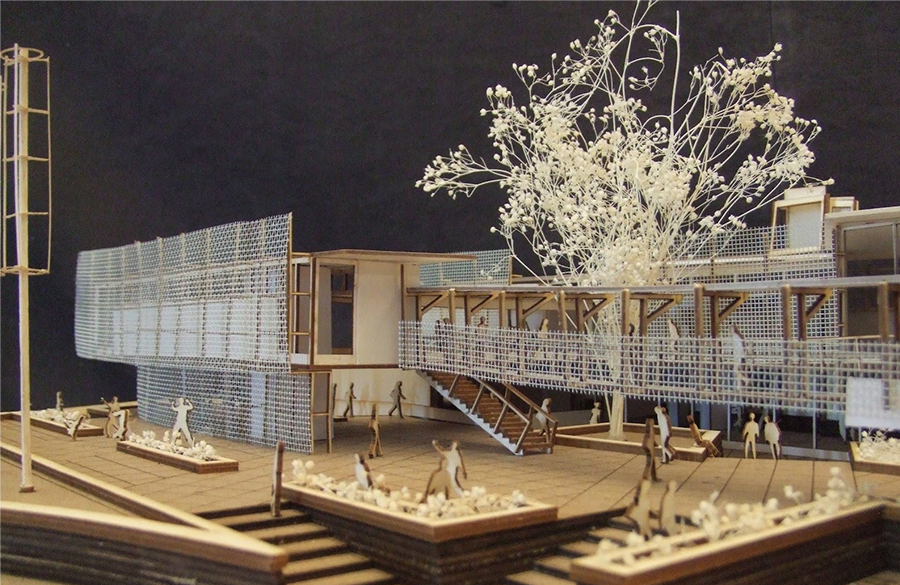
Architectural design is a way of expression. While a picture is worth a thousand words, a well-executed 3d Architecture Model is worth a million words. It ties the sense of space, context of the site, and materiality into a singular piece. For students to starchitects, architectural models making is an essential tool that helps communicate their design with colleagues and more importantly to the public who might not have a deep understanding of architectural drawings.
1. Topographic Models
Topographic models express site levels and contours. While every architecture model needs a flat base, topographic models act as one. No land on earth is flat. Thus, topographic models are used to analyze the site levels, drainage as it helps the architects in the earlier stage of the design and understanding of the site.
How to make a topographic model:
- Fix the scale of the model.
- Choose the material needed according to scale. Foam board is the most versatile material for architectural models. It is available in a variety of thicknesses which aligns with the contour differences of the site.
- Print a topo plan sheet by the model size.
- Trace each contour line to the model material of the size of the base. Cut along the drawn line.
- This provides us with levels of foam board glued atop each other. Stick them using the desired adhesive for the material chosen. Anabond, fevikwik, and fevicol are household adhesives.
- The topographic model should be ready. Smoothen up the edges with sandpaper.
In the case of water bodies, use epoxy with blue coloring. However, the lazy man’s way of doing the topographic model is creating a 3d digital model and 3d printing it.
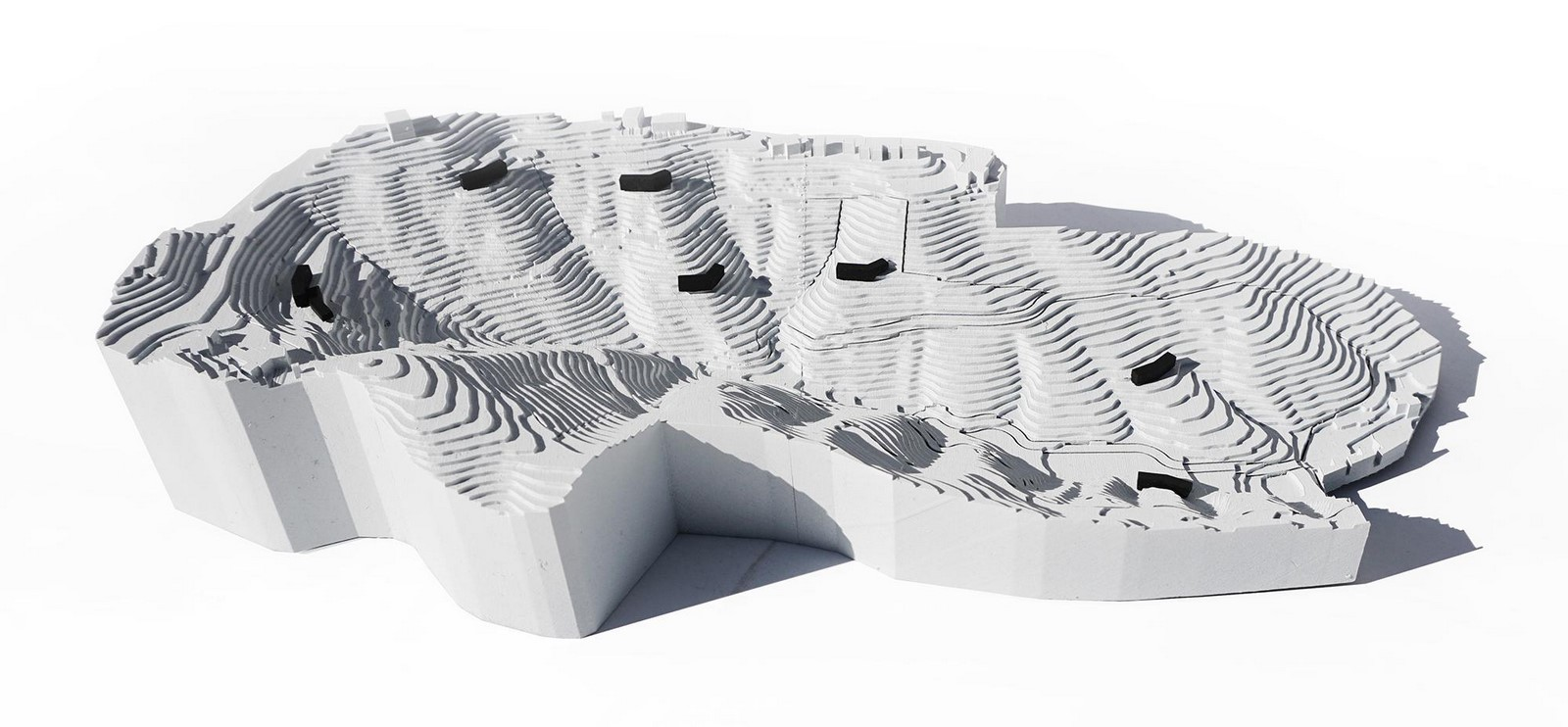
2. Building Exterior Architecture Models
Building exterior models are the most populous model type made. The proposed building is modeled for client demonstration. In the case of students, it is to showcase talent, grab some extra marks, and obviously to learn model making. Materials like foam boards, cardboards, paper boards of varying thicknesses to wood, metal, and plastic(which is 3d printing) accompanied with glass sheets or transparent sheets to make windows and other features.
How to make a building exterior model
- Make the topographic base.
- Choose the material needed. On the board, draw the plan outline and cut it. Similarly, cut the elevations onto the board. This process is similar to making a geometric shape from nets, folding paper into shapes. Any protrusions or recessions can be cut into/ stuck to the volume.
- Ensure the wall thicknesses align to the scale of the drawing. Add details like doors, windows on the cut board. Make windows separately and fit them snugly into the planes.
- The planes are placed perpendicularly to each other and the ground and stuck together. Make other elements like roofs, parapets, and handrails.
- Complete the model by painting it or sticking bitmaps of the material used in design(to scale). It can be done along with step two.
The above method is preferred only for geometric models. For models with complex forms, it is preferable to tackle each building element separately by cutting and pasting the parts onto the base.
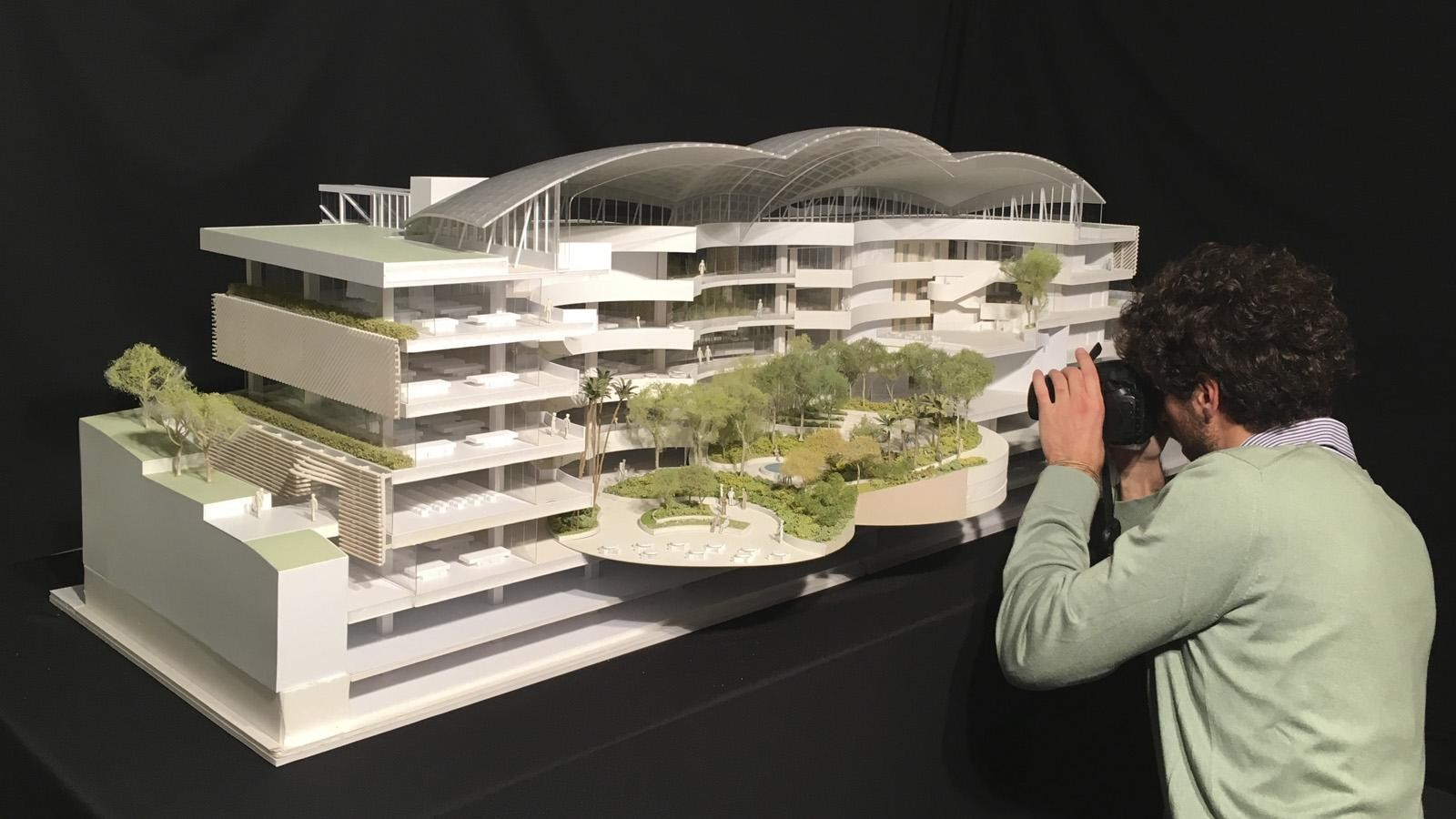
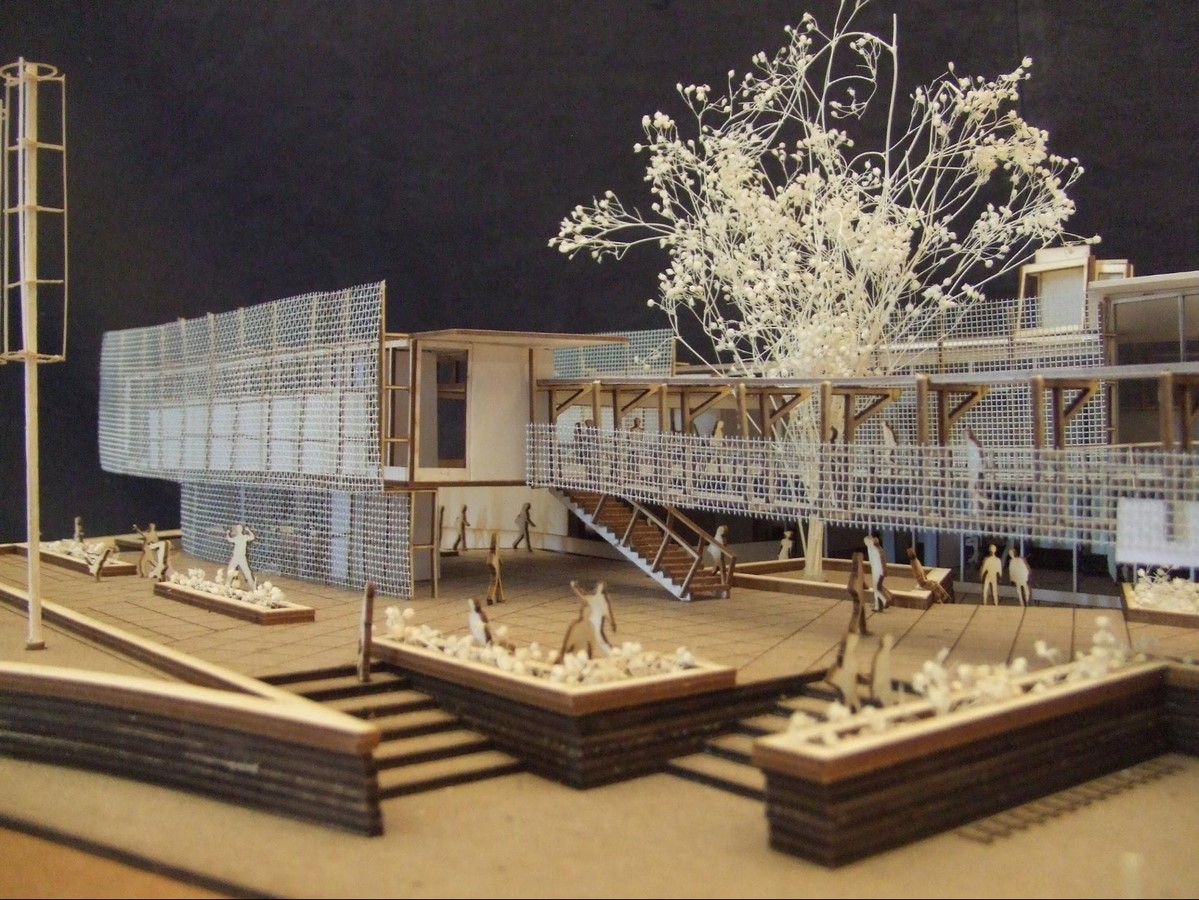
3. Building Interior Architecture Models
Building interior models are done mostly by interior designers. Interior architecture models are more complex and detail-oriented in comparison to exterior models. These models co-exist with the exterior ones where the outer shell is removable, revealing the interiors.
How to make a building interior model
- Follow steps one to four of building exterior architecture models.
- After attaining a 3d enclosure of your desired space, add furniture. Small toys could make furniture, but to attain materiality, it is carved out of wood ideally. The homemade way is to make one out of the board and paint it.
- Other details like plants, materials should be added before sticking the furniture down. Try using the same material of a smaller scale, say a metal rod in place of a steel column, sand imitates pebbles, and so on. The ideas are endless.
- A working model can be done by adding lights to lamps and providing wiring through the concealed roof or the base.
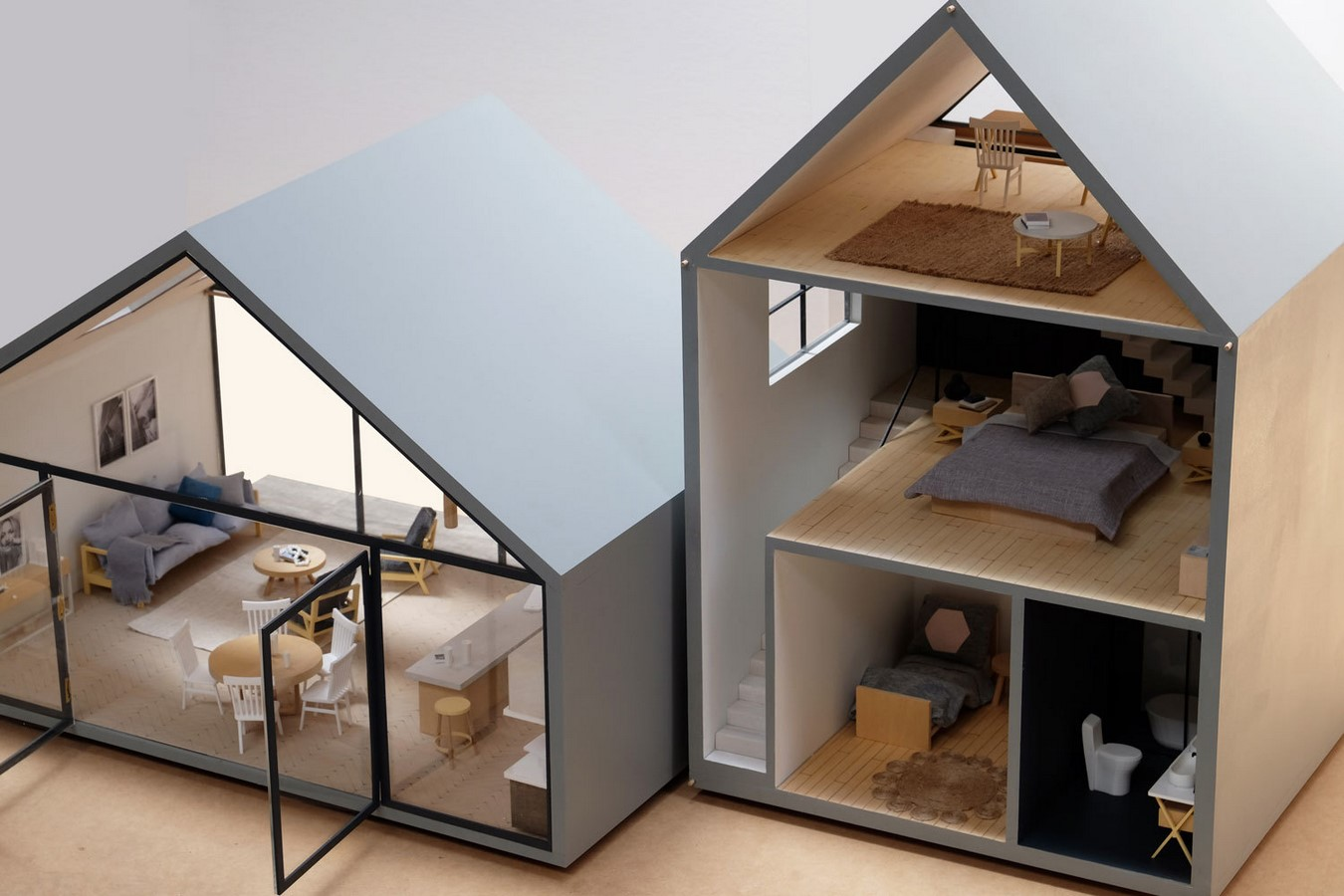
4. Landscape Architecture Models
Generally made by landscape architects, these models might exclusively focus on landscaping elements like gardens, parks, or the landscape design of a building. Every model has landscaping like grass, sand, or tree. But landscape architecture models focus on detailing.
How to make a landscape architecture model
- Make a topographic base.
- Make a block model of the building. A block model is a simplified exterior model which only depicts the massing of the building designed.
- Make the trees and plants. The species should be identified, leaf and branch sizes recorded and imitated. A block of a soft sponge is taken and torn down into tiny pieces. The smallest bits are for making flowers, to separate them-use a sieve. The green ones can be used as grass. The size of the chunks obtained could help distinguish the species. Mix a thick fluid of leaf-green paint with water and soak the sponge in it. While it dries, use metal wires to make the trunk and branches. Notice how the branches of trees look. Almond trees have perpendicular branches while acacias have acute-angled ones. Use multiple rods to form the trunk, bend it as required. Dip the tree upside down in a bowl of glue-water in a 50:50 ratio. Sprinkle the dried-up sponge onto the frame made. Though available for sale, scale models of trees for architects and designers.
- For making the terrain, mix glue and water in a 50:50 ratio and paint the base. Sprinkle the sieved chunks of sponge onto it evenly. Blow the excess away gently.
- Make other elements like lamps, furniture, and pedestrian pathways with boards and paint them.
- Epoxy is preferred to model a water body. But it can also be made with four layers of toilet paper stuck with glue and water at a 50:50 ratio. Use a paintbrush to form waves and paint with shades of blue to make it look realistic.
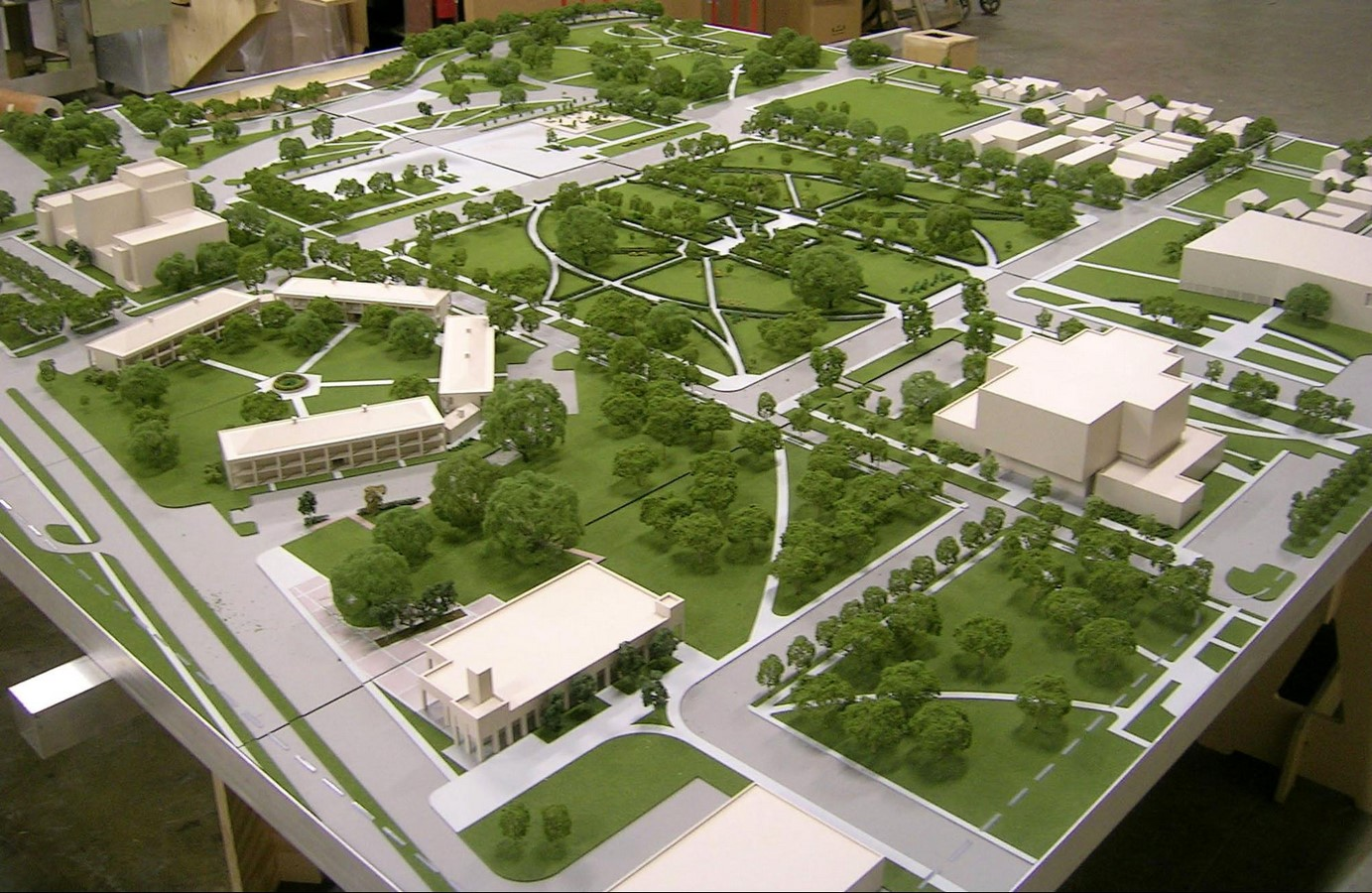

5. Site Models
Site models are generally done in real estate firms, though it is a norm in architectural practices and used as showpieces in large buildings. Mostly made in 1:1000, site models show the site at a relatable scale containing buildings, parking, and natural features. Site models may be working models which have lighting options or even the crazier fountain, water streams with actual water. They are made by doing a topographic model and completing it off with an exterior and a landscape model.
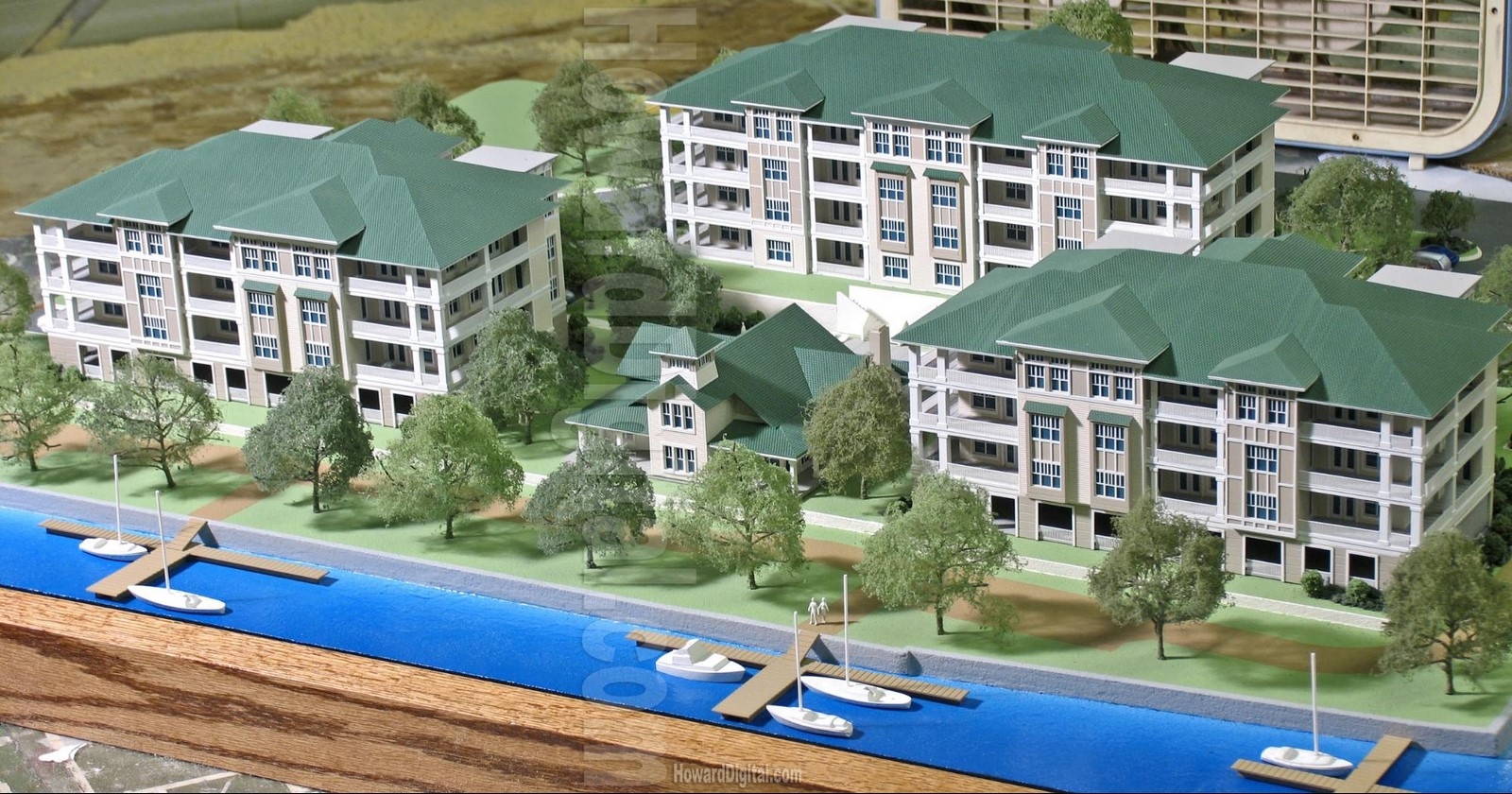
6. Urban Design Models
These models are large-scale ones, typically enveloping a city or a neighborhood. Urban design architecture models have buildings that are block models. The main design done in response to the urban sprawl is done in detail.
How to make an urban design architectural model
- Fix the scale and the city extents of the model.
- Paint road networks necessary. Don’t fuss about details unless they are relevant to the model focus.
- Make block models of all buildings and stick them to their respective places.
- Using the choice of materials, the building/ urban scale project is modeled. For example, a metro rail urban design model will involve stations, rail networks, signals, and the structural system. It details the pedestrian and vehicular connection in response to the context.
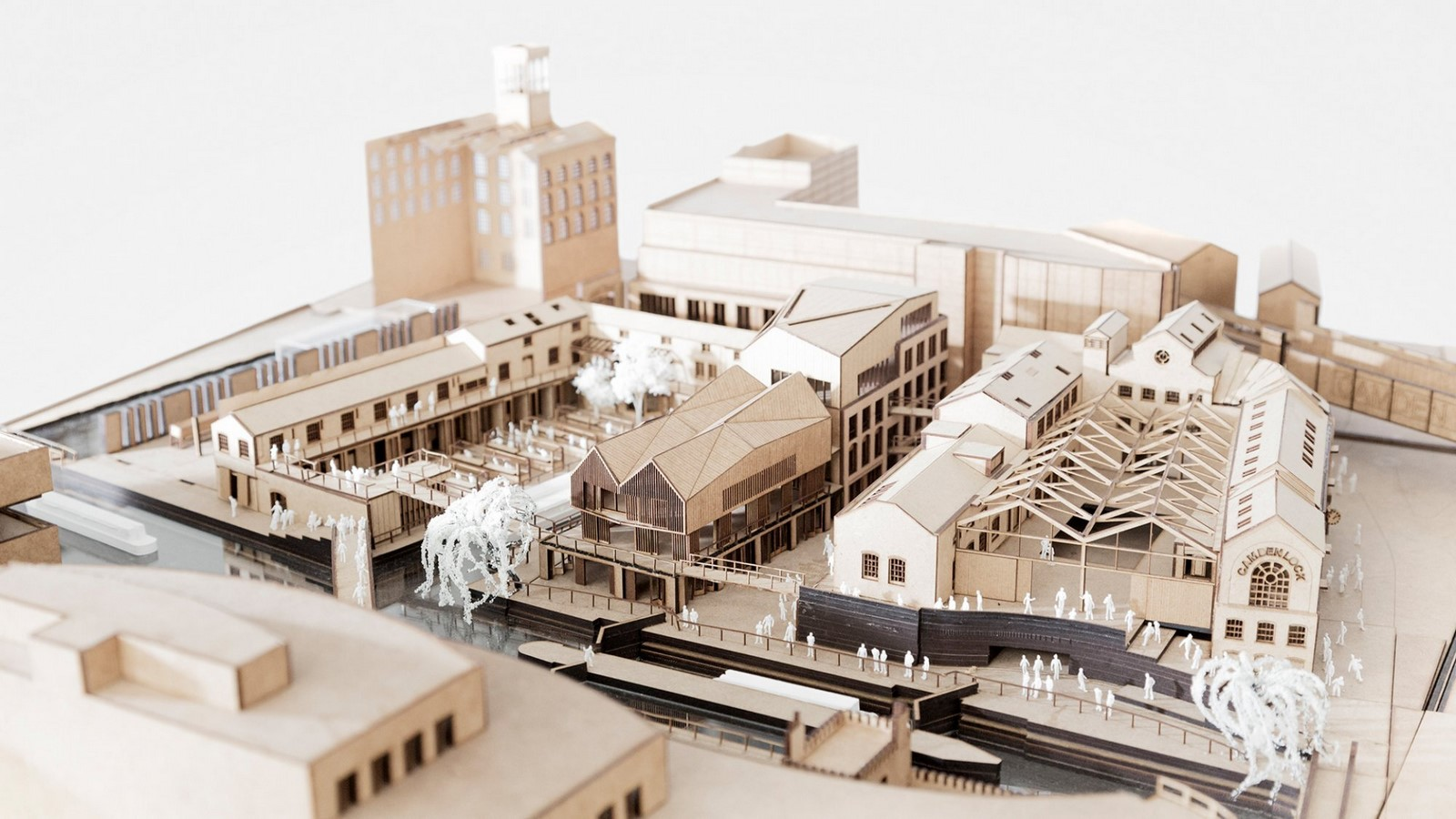
7. Structural Models | Architectural Models
For complex structures, models simplify the structural system. It focuses on detailing the structural frame and foundations rather than the building itself. Structural elements of the model are made separately and glued together.
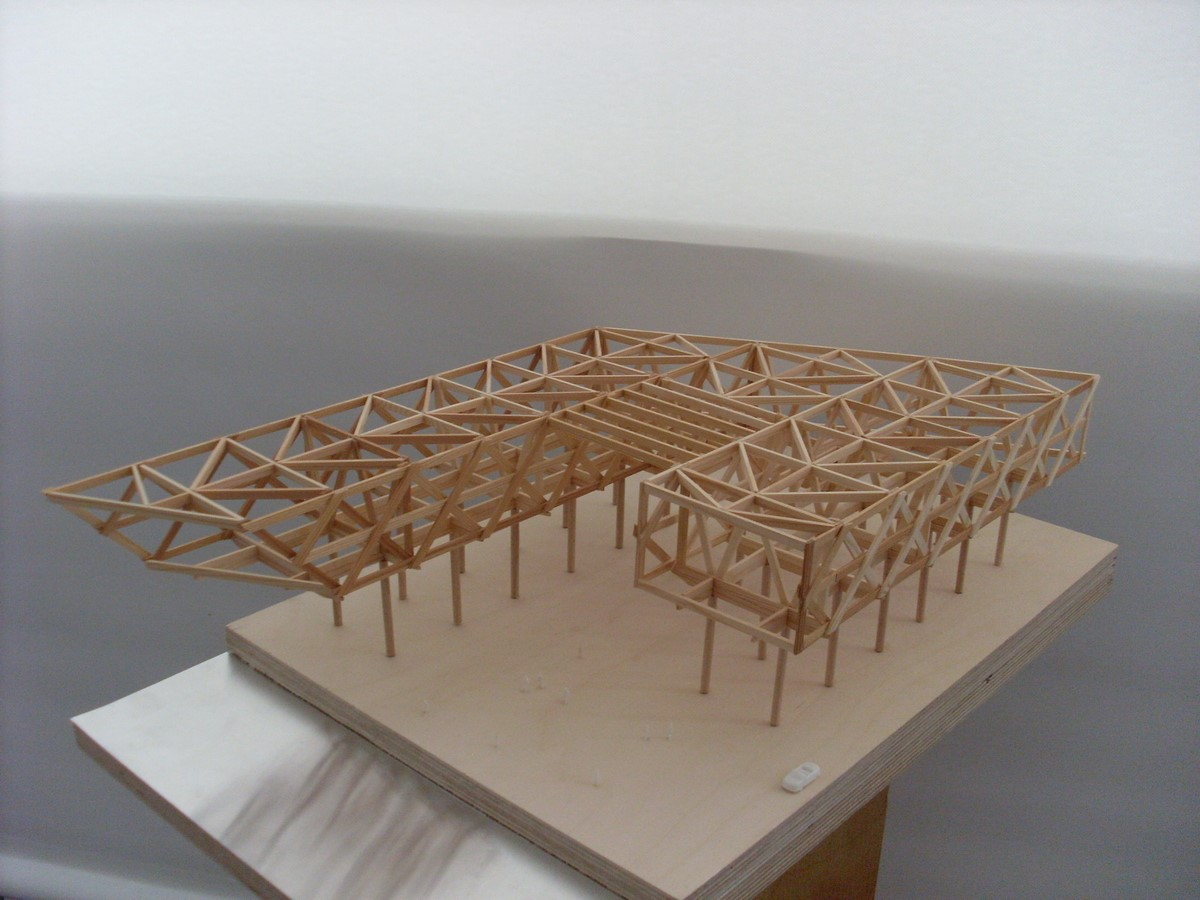
8. Detail Architecture Models
They display a particular structural, landscape, or aesthetic detail designed in a project and shown to clients. Details between professionals are shared through drawings.
For every detail necessary, use a material that is similar to the original material used in the design. For example, use red modeling clay cut in cuboids to make a brickwork detail. Small rocks could make stone walls. The beauty of detailed models is that the scale of the model is flexible. Thus, it enables using the actual materials for making the architecture models.
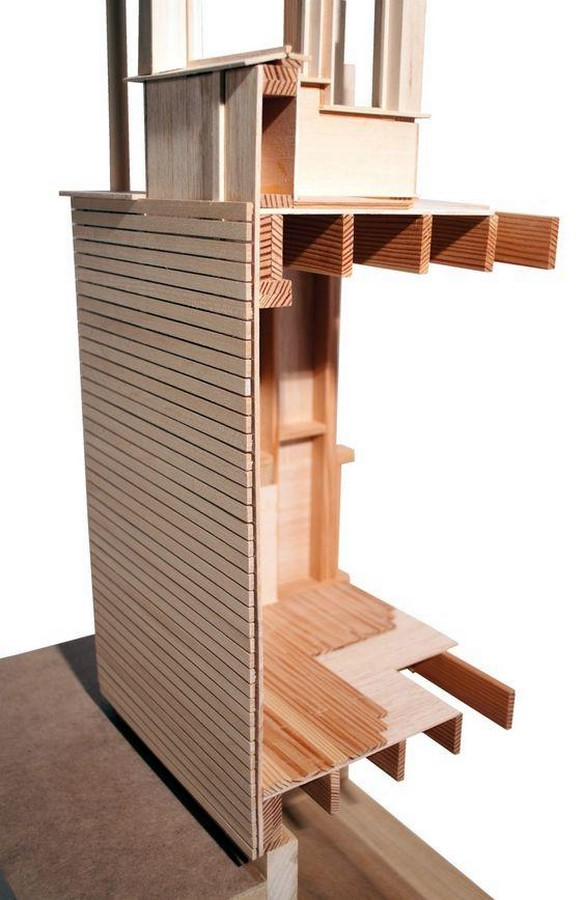
9. Conceptual Models
Conceptual models explain an idea. Architectural concept models level up over sketches, helping the maker and the person viewing clear concepts used in a structure. They are used to studying the sun, wind paths, and so on. It is done like building models, depending on the output expected out of that model. Conceptual models are done with boards and glue.
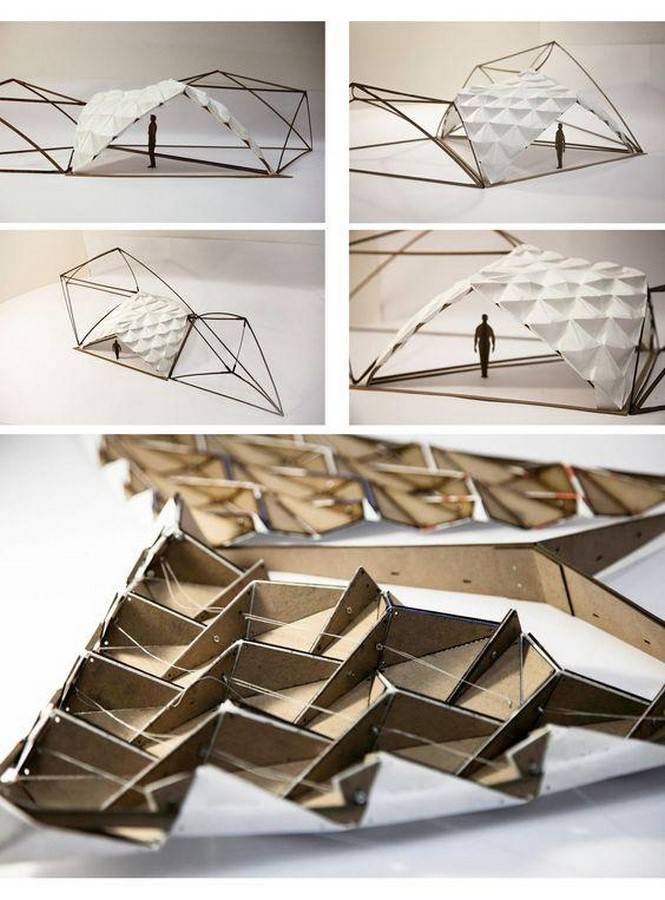
10. Product Design Models
Product designers use model making to convey their ideas. Typically made in 1:10 to 1:1(to scale prototype), it helps designers convey their ideas to clients. Prototypes of the product are of the actual material which the design intends to use. This model type is not used much by architects. But in the case of museum designs and other novelty structures, craftworks are made in scale models to visualize how they might look in their exhibits. They are manufactured in factories with data fed into the computer digitally. These models are working models with movable joints and levers.
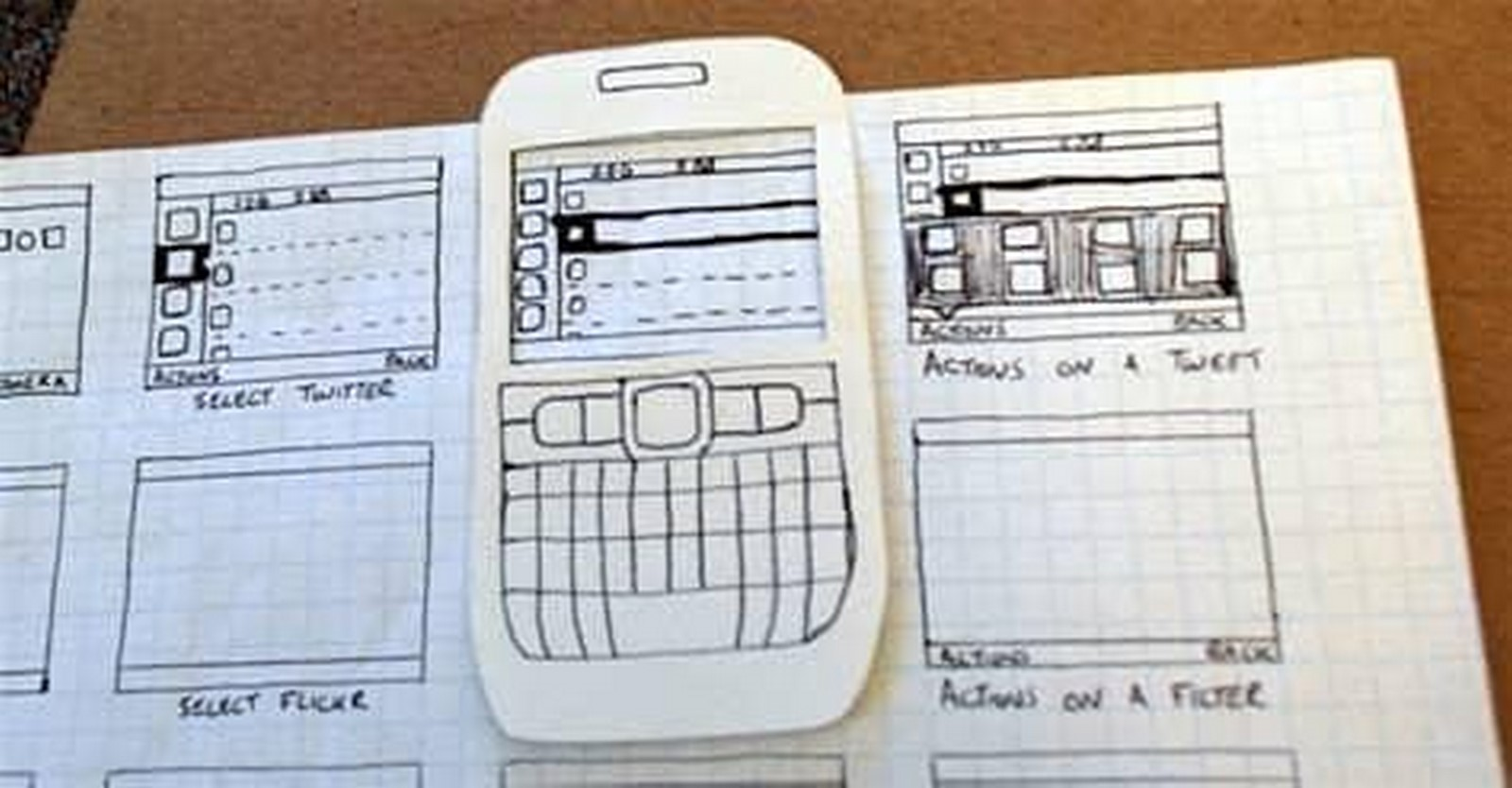
References
Book- Architecture models- Wolfgang Knoll, Martin Hechinger
https://www.archdaily.com/904379/best-materials-for-architectural-models
https://www.youthttps://www.arch2o.com/architecture-model-complete-guide/ube.com/watch?v=1uKzpj3p1pc